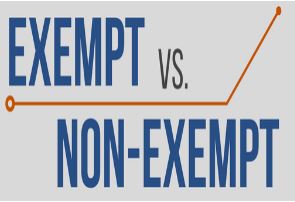
by editor | Nov 7, 2022 | Compliance and Regulatory - Directors, Documentation - Nurses, Hospice 101 - Nurses, Metrics and KPIs, Rules and Regulations - Nurses
What is the CAHPS hospice survey?
The CAHPS hospice survey is administered to eligible caregivers after a patient’s death to measure the quality of care and communication provided by the hospice. A hospice agency must participate in the CAHPS Hospice Survey to be eligible for its full annual payment update (APU). Failure to participate will result in a 2% reduction in APU. For example, compliance with the 2022 CAHPS Hospice Survey affects fiscal year 2024 APU.
Are all hospices required to administer the CAHPS hospice survey?
All Medicare certified hospice agencies should participate in the CAHPS hospice survey with two exceptions:
- Size Exemption: The exemption is based upon the number of decedents the hospice served in the prior calendar year. If the hospice served fewer than 50 survey eligible decedents or caregivers in the prior calendar year, the hospice is exempt from the CAHPS hospice survey
- Age Exemption: The exemption for age of hospice is based upon the date that the hospice received its CCN. The hospice is exempt for the remainder of the calendar year in which it receives its CCN.
CMS identifies hospices that are exempt due to age. A hospice agency is not required to file a form to request Age Exemption.
CMS does not identify hospices that are exempt for due to size. A hospice agency must apply for a Size Exemption and must apply for the Size Exemption each year that it wishes to be eligible for this exemption.
How does a hospice apply for a Size Exemption?
The hospice must complete a Participation Exemption for Size Form. The form, deadlines for submission, and details for completion can be found here.
The form requires not only a count of total patients who died while in hospice care, but certain details about these patients to determine the count of survey eligible patients and caregivers. For example, the hospice will need to submit counts of the number of patients
- who were under 18 when they died
- where there is no caregiver on record
- who died within 48 hours of final admission to hospice care
and several other categories. Care must be taken that patients are only counted in one of the categories even if they fall into multiple categories, to eliminate double counting.
What happens once a hospice submits a size exemption form?
Immediately upon submission of the form, the CAHPS Hospice Survey Project team will confirm receipt of the form. This confirmation, however, is not equivalent to Size Exemption approval. CMS will review the data to determine if the exemption is met. If CMS determines that the exemption is not met, the hospice is responsible for survey administration. Hospice agencies must accurately complete the Participation Exemption for Size Form so that they are not faced with a rejection by CMS. If the Size Exemption is not met and the hospice agency has missed administering and submitting surveys, the hospice agency will face an APU reduction.
Where can you find more information?

by editor | Nov 7, 2022 | Compliance and Regulatory - Directors, Documentation - Nurses, Hospice 101 - Nurses, Metrics and KPIs, Rules and Regulations - Nurses
Why should a hospice agency use a CAHPS Hospice Survey vendor?
A hospice agency is not permitted to administer its own CAHPS Hospice Surveys. Instead, every hospice agency is required to contract with an approved CAHPS Hospice Survey vendor. The vendor will administer the CAHPS Hospice Survey on an ongoing monthly basis and submit the data.
How can a hospice agency find an approved CAHPS Hospice Survey vendor?
CMS provides a list of approved vendors, which can be found here
Tips for selecting a survey vendor
The results of the CAHPS survey are publicly reported on Care Compare. Further, failure to submit the data timely can result in penalties from CMS. Given the significance of this survey, it is important to choose a reliable and experienced vendor that understands the hospice industry and can ensure both the quality and compliance of the data that will be submitted to CMS.
Some factors to explore when evaluating vendors include:
- Maturity of the vendor’s business and its processes. When was the business formed, number of clients, number of surveys, technologies used, operational failures, and growth in staff/changes in operations in support of growth in client base.
- Conducting the Surveys. What are survey response rates, languages supported, and mediums supported.
- Data sharing. How will patient files be shared with the vendor, does the vendor work with your EMR, is there a secure way to transmit data.
- Data Security. Has the vendor ever had a data breach, what steps are taken to ensure data protection, what steps are taken to ensure no data loss, how is data backed up, in the event of a failure how quickly will data be restored.
- Data Insights. Finally, with respect to insights, what analysis is performed on the data, what reports or dashboards does the vendor provide, does the vendor help the agency understand the results.
- Fees and Billing. Models for fees for CAHPS surveys vary by vendors. Examples may be flat price billing, fee per completed survey, fee per caregiver. Additional fees may be charged for follow ups, detailed reporting to the hospice agency, analysis shared with the agency, or access to survey data, for example.
Notifying CMS of the selected vendor
A hospice agency is required to complete a form that authorizes the CAHPS Hospice Survey vendor to collect and submit survey data to CMS. If the hospice agency does not notify CMS of this authorization, the vendor may not submit the data on behalf of the agency.
The CAHPS Hospice Survey Vendor Authorization Form is used to notify CMS of vendor authorization. The form and instructions for submission can be found here
The Vendor Authorization Form must be signed and notarized. The individual who signs the form is considered the CAHPS Hospice Survey Administrator for the hospice agency. An additional individual in the agency may be designated on the form as the primary point of contact for the survey.
Timelines
The Vendor Authorization Form must be submitted three months before data is required to be submitted.
For example, patients who die between January 2023 and March 2023 will be contacted for survey between April 2023 and June 2023. Their data will be due for submission to the CAHPS Hospice Survey Data Warehouse on August 9, 2023.
If an agency is first contracting with a vendor to begin service in January 2023, the Vendor Authorization Form would need to be submitted by May 9, 2023.
Where can you find more information?

by editor | Oct 30, 2022 | Human Resources, Payroll
What is an exempt employee?
Exempt workers are paid on a salaried basis. Salaried employees receive a prespecified amount of compensation each pay period. Their salary may not be reduced because of changes in the amount of work performed or because of changes in the quality of work performed. Learn more about exempt employees here: Exempt vs. Non-Exempt Employees
May pay be deducted from an exempt employee’s wages?
Under the federal Fair Labor Standards Act (FLSA), employers may not deduct wages from an exempt employee’s wages due to partial day absences. However, an employer may deduct time from an exempt employee’s accrued Paid Time Off (“PTO”) or accrued vacation time for partial day absences. State laws may differ from the federal guidelines and each state may have its own regulations.
In general, if a salaried employee performs any work during the workweek an employer must pay the employee their full salary amount. However, there are a few situations where deduction from an exempt employee’s salary is permissible under federal law:
- A workweek where an employee performs absolutely no work
- The initial or final week of employment (where the employee did not work the full workweek)
- Absences of one or more days due to personal reasons, other than sickness or disability, including vacation
- To offset amounts the employee receives from jury or witness fees
- For leave taken under Family Medical Leave Act (“FMLA”)
- Unpaid disciplinary suspension of one or more days in accordance with documented workplace policies
Where can you find out more?

by editor | Oct 30, 2022 | Employee Onboarding, Human Resources, Payroll
The Fair Labor Standards Act (FLSA), enacted in 1938, has four major provisions: regulations for minimum wage, overtime pay, record keeping and child labor law. It also introduced standards for exempt and non-exempt employees. As it relates to the FLSA, exempt means free from an obligation of overtime pay. Note that FLSA regulates the Federal standards; the states may have different regulations in each of these areas.
What is an exempt employee?
Exempt employees are not eligible for minimum wage, overtime regulations, and other protections that are extended to non-exempt employees. Exempt employees receive a set salary every pay period. Exempt employees are typically salaried workers and often fill executive, supervisory, or administrative positions.
Which employees are covered under the FLSA law?
Enterprise Coverage: If a business is covered then all employees of the business are entitled to FLSA protection. What businesses are covered under enterprise coverage?
- Business has at least two employees and does sales of at least 500,000
- Named enterprise coverage: Hospital, business providing medical or nursing care for residents, school, preschool, or public agency, whether private or non profit
Individual Coverage: Individual employees in an organization may be entitled to FLSA protection even if the entire organization is not entitled to FLSA protection
- Individual is engaged in activity that involves working across state lines (interstate business) on a regular basis
- Domestic service workers (e.g., housekeeper, cook, babysitter)
Should an employee be classified as exempt or non-exempt?
- An employer should consider all employees as non-exempt and overtime eligible unless they can meet a specific exemption under federal or state law
- An employee who remains in the same job position should not move back and forth between exempt and non-exempt. Further, an employer cannot decide that they want to make an employee exempt. The regulations determine FLSA classification.
- Job title does not determine classification
Employers must correctly classify their employees as exempt or non-exempt or they run the risk of accruing compliance violations.
Can any worker qualify as an exempt employee?
An employer may wish to classify all employees as exempt employees – in this way avoiding the requirement to pay time and a half for overtime hours worked. However, not all employees are eligible to be classified as exempt employees.
The Department of Labor (DOL) has established guidelines to determine who is eligible to be considered exempt. The qualifications generally fall into three categories: salary exemption, nature of payment, and job duties. An employee must pass the tests in all three categories to qualify for exempt status.
Exempt employees test #1: total earnings
The first test to qualify an employee for exempt status is that the employee must earn the salary threshold set by the FLSA to be exempt. The minimum salary threshold of the FLSA changes every year. In 2021, the required minimum employee compensation to have exempt status was $684 per week ($35,568 per year). This salary threshold must be met regardless of being part time or full time. If the salary threshold is not met, the employee may not be classified as exempt (with an exception for teachers, doctors, and lawyers).
Exempt employees test #2: nature of payment
The second test to qualify an employee for exempt status is that the employee must be paid on a salaried basis, where compensation is not reduced due to quantity or quality of work.
Exempt employees test #3: job duties
The third test to qualify the employee for exempt status is whether the employee meets the job duties that qualify for exempt status. There are only certain job duties that qualify an employee for exempt status. These job duties involve a higher level of expertise or knowledge or require the employee to hold certain professional roles. There are several categories of job duties exemptions:
Executive exemption: employees who would qualify for an executive exemption would
- Regularly supervise employees
- Be responsible for managing part of the business
- Play a role in hiring employees or in delegating tasks
Administrative exemption: employees qualifying for an administrative exemption would
- Perform office jobs directly related to business operations or management of the organization and its customers
- Exercise independent judgement over business decisions
Professional exemption: employees qualifying for a professional exemption would
- Perform job duties that require specialized education
- Have a college degree or higher in their field
Computer exemption: employees with this exemption would
- Have a computer related role
Outside sales exemption: employees qualifying for this exemption would
- Have a primary duty of making sales or securing contracts or orders
- Conduct their work outside of the business’ premises
Where can you find out more?

by editor | Oct 29, 2022 | Human Resources, Payroll
How should an employer handle unclaimed wages?
An employer may find that an employee fails to cash a paycheck. Most often, this occurs with the final pay check. These “unclaimed wages” may not be treated as “found money.” When an employee fails to pick up a final check or fails to cash a check these unclaimed wages may become a form of “abandoned property.”
When is property considered abandoned?
Each state has its own definition of what it specifies as the abandonment period. That is, the time that each state requires that property must lay dormant before it is considered abandoned varies from state to state.
Once the unclaimed wages are considered abandoned, the employer must pay these unclaimed wages over to the state where the person last worked. The state steps into the shoes of the “lost owner” and takes ownership of the property until the rightful owner is found.
The state laws governing abandoned property are known as esheat laws because the property “escheats,” or reverts to the state and is not kept by the employer. Escheat laws are intended to give the employee an opportunity to claim the funds without having to track them down through corporate mergers or relocations,. Instead, the employee can go to the state to locate and claim the funds.
How long should an employer retain the funds?
Before an employer does anything with the unclaimed wages, the employer should check state laws to see how long the wages must be held, the employer’s obligations for locating the owner, when the employer must report the unclaimed wages to the state, and where the report must be sent to. In some states the wages are sent to the treasurer’s office. In other states the wages are sent to the attorney general’s office. States generally require that the employer holds the funds for at least one year.
Trying to locate the employee
Once an employer identifies unclaimed wages, the employer cannot simply transfer these funds to the state. The employer is obligated to make efforts to locate the employee. Employers must demonstrate that they have taken steps such as sending a tracked mailing (e.g., certified letter or UPS) to the employee’s last known mailing address or other method of contacting the employee using their last known contact information.
Most states require the employer to wait a minimum of six months after making these attempted notifications. Once the employer has complied with the statutory requirements – and can demonstrate that in the filing with the state – the funds may be returned to the state.
Reporting and remitting funds to the state
States have different reporting deadlines in the year. Some states use a date early in the following year after the dormancy requirement is met. Other states have a more accelerated deadline which would require advanced planning to ensure the deadline is not missed.
State unclaimed property laws also have detailed requirements, that vary by state, for remitting the funds to the state and for required supporting documentation.
Summing it all up: What is required of the employer?
Each state has its own unclaimed property rules and requirements.
Step 1: Document every contact you made with the employee
Most states require employers to show due diligence that they made all efforts possible to reach out to employees and give them the funds that they are owed in an attempt to keep unclaimed wages from becoming abandoned property
Step 2: File an annual report with your state
States typically require the employer to file an annual report including the employee’s name, last known address, amount and payment date of the unclaimed check, and the date of last contact with the employee
Step 3: Send the unclaimed wages with the report
With the report, the wages must be sent to the state. The state holds the money indefinitely (until claimed). The employer’s responsibility for paying the wages ends once the employer submits the wages and the report to the state.
Where can you find more information?
Recall that these laws vary by state and each state has its own requirements.
- National Association of Unclaimed Property Administrators (NAUPA) webpage has links to state websites: https://unclaimed.org/
- Search by state name and word “escheat”

by editor | Oct 28, 2022 | Employee Onboarding, Human Resources, Human Resources, Payroll
When should a worker be classified as an employee versus as an independent contractor?
What is the difference between these two types of workers? Why is it important for a hospice agency to properly classify the workers who are providing services? Why is it important to determine whether the workers providing services are independent contractors or employees?
Why would an employer want to classify workers as independent contractors instead of employees?
A business must withhold income tax, withhold and pay social security and Medicare, and pay unemployment taxes on the wages paid to employees – but not those paid to independent contractors. By classifying workers as independent contractors, an employer can avoid payroll taxes, unemployment insurance and workers compensation coverage. The employer can also save on the cost of all the benefits that are offered to employees but are not offered to independent contractors.
Are there consequences to misclassifying workers?
The IRS is increasing its efforts on auditing companies, with a particular focus on worker classification. The liability from an employment tax audit that identifies misclassified workers may be quite significant. A business that classifies workers as independent contractors instead of employees may be subject to retroactive tax withholding, penalties, and interest.
How can an agency differentiate between an employee and an independent contractor?
An employee is typically a person who is providing services where the employer controls what services are provided and how the services are provided. Specifically, the employer has the right to control the details of how the worker performs the tasks. There are three key areas to consider when evaluating whether a worker is an employee or an independent contractor:
- Behavioral control: Is the worker free from control or direction over performance of the tasks? Or, does the employer have the right to control how the worker performs the tasks?
- Financial control: Is the worker engaged in independently established business or occupation? Or, does the employer control the financial and business aspects of the worker’s job? For example, does the employer control how the worker is paid? Does the employer provide the supplies and the tools that the worker requires to complete the tasks?
- Relationship between the parties: Does the employer provide the worker with benefits such as insurance, vacation pay, or pension plan? Are the services that are performed a key aspect of the business?
By considering the different aspects of behavioral control, financial control, and the relationship between the two parties, and employer can determine whether a worker is more appropriately classified as an employee or as an independent contractor. Each of these three key areas involves multiple factors. Determination of whether a worker is an employee or an independent contractor is not an objective test and some of the factors are more important than the others, depending upon the industry and type of independent contractor being evaluated.
Where can you find out more?






